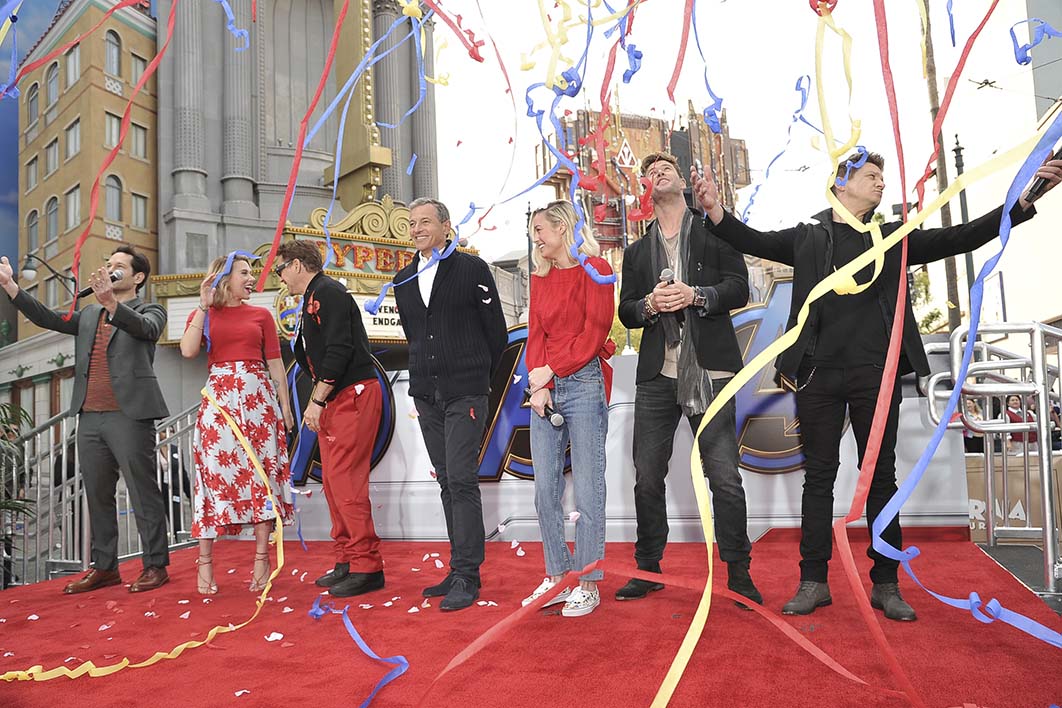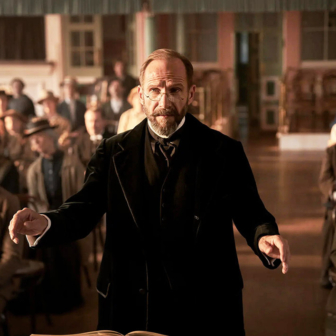The Ride of a Lifetime: Lessons in Creative Leadership
By Robert Iger | Bantam Press | $35 | 246 pages
Careers have become messy things. No one imagines they are going to leave school or university, join an organisation, and still be there decades later. Working lives, especially in creative industries, are portfolios of change, stints here and there, assemblies of opportunity, serendipity, wrong turns, dead ends, gap years, lifelong learning.
Yet the chief executive of one of the world’s most successful creative enterprises is virtually a one-company man. Robert Iger joined ABC television in the United States as a studio supervisor in 1974. About a decade later, ABC was bought by Capital Cities Communications. Ten years after that, the Walt Disney Company acquired ABC/Cap Cities. One of Iger’s bosses and mentors at Cap Cities, Tom Murphy, told him, “Pal, if you play your cards right, one day you will run that company.” He was right. In 2005, the Disney board chose fifty-four-year-old Iger as just the sixth chief executive of the company founded by Walt Disney in 1923. He is still in charge, with a contract that will keep him there for another two years.
The first part of The Ride of a Lifetime, “Learning,” is about Iger’s path to the top of Disney. He rose via ABC’s Wide World of Sports and ABC Entertainment, where he commissioned shows like the original Twin Peaks and NYPD Blue that helped ABC to overtake NBC’s prime-time dominance with viewers aged between eighteen and forty-nine.
The second part, “Leading,” covers Iger’s remarkable period at the top of Disney. Four of these seven chapters are about the big acquisitions that transformed the company. Disney+, the streaming video service launched in the United States on 12 November and in Australia a week later, is a major threat to the first-mover Netflix thanks to Disney’s expanded archive, sequel and merchandising rights that came with takeovers of Pixar (2006), Marvel Entertainment (2009), Lucasfilm (2012) and 21st Century Fox (2019).
Each of these four companies was controlled by an idiosyncratic visionary who cared about more than the price. Steve Jobs started out with many more “cons” than “pros” about selling Pixar to Disney, but thought “a few solid pros are more powerful than dozens of cons.” Before he died, five years after the sale, Jobs thought they had “saved two companies.” Disney was re-energised and Pixar had flourished in ways it never would have without the older, larger studio.
Jobs joined the Disney board, and Marvel’s Ike Perlmutter said a call from the Apple co-founder was crucial in persuading him to do the deal with Iger and Disney: “He said you were true to your word.” Perlmutter “hated Hollywood and didn’t care about the films themselves,” says Iger, but he did love controlling Marvel’s wildly successful studio.
George Lucas was always going to struggle to let go of the Star Wars franchise he founded, and was disappointed with the first Disney-produced sequel. Iger had been immovable on this aspect of the deal. Where Pixar’s creative principals were brought inside and put in charge of Disney Animation, Lucas would have to surrender creative control of “perhaps the greatest mythology of our time.”
Murdoch had spent his life building an empire that many imagined would be passed on to his children. He realised even 21st Century Fox didn’t have the scale to compete with the emerging giants of digital, online video. He liked the strength of Disney’s stock price, and he thought it would get the necessary regulatory approvals faster and do a better job of merging the businesses. (He was apparently keen, as well, to find out if Democrat-supporting Iger would be running for president in 2020!)
One of the things Iger brought to these acquisitions was his own early experience with taken-over media companies. Employees at ABC, one of the Big Three US TV networks, were stunned to be acquired by the much smaller Cap Cities in the 1980s. The “homespun” Tom Murphy and Dan Burke turned out to be “no-nonsense businesspeople who focused on the work… had zero interest in the glitz… and sensed which way the winds were blowing” in the media business.
The sale of ABC/Cap Cities to Disney a decade later came as another huge shock to many, though not to Iger. Disney made clear it wanted him to stay and run its new media division once Murphy and Burke were gone. Paradoxically, Iger found the aggressive Hollywood studio “centralised and process-driven,” in contrast to the decentralised, accountable culture that Murphy and Burke fostered. As chief executive of Disney, Iger would later dismantle the central strategy team he thought was sucking too much responsibility from individual business units.
Eventually serving as second-in-command at Disney for several years before chief executive Michael Eisner was effectively forced out in 2005, Iger needed a “narrative” to convince the board he was the right person to lead the company out of the crisis. With a political spinner, he tested out the priorities he was thinking of pitching. Reaching the fifth or sixth one, he received a blunt response: “You only get three.”
Iger settled on high-quality content, technology and global scale. He has been selling those messages ever since. All the Big Four acquisitions offered content; Pixar especially had technological expertise; Fox brought scale. The highlight of it all, so far, is Shanghai Disney Resort — “authentically Disney and distinctively Chinese” — opened in 2016, which Iger has been involved in since selecting the site in 1998.
The neat-sounding ascent to the corporate stratosphere has had disruptions. Twice, it called for moves from New York to Los Angeles that didn’t suit Iger’s marriages to women with their own big East Coast media jobs. The first, to an executive producer of news at WNBC who never liked LA, broke down. She moved back to New York with their two children and Iger spent a “terrible year” visiting. The next promotion took him back to New York, where his engagement to Good Morning America’s weekend anchor, Willow Bay, happened around the time of the Disney/Cap Cities takeover. She was “unequivocally supportive” of Iger’s move back to Los Angeles to run Disney’s media division and “trusted that she and I could figure out whatever we needed to figure out.” They are still together: Bay later became a senior editor for Huffington Post and was appointed dean of USC’s Annenberg School for Communication and Journalism in 2017.
As the negotiations between Disney and News/Fox were beginning, another change “more profound than the mega-technology changes” was under way. This “transformative social change” came from serious allegations about sexually predatory behaviour, equal opportunity and equal pay for women in Hollywood and elsewhere. According to Iger, it “became the catalyst for long overdue action.” For Disney, this included one of Pixar’s legendary principals, John Lasseter, who took a six-month sabbatical in 2017 and did not have his contract renewed at the end of 2018. It was Iger’s “most difficult and complex personnel decision.” Disney’s board, chaired by Iger, now comprises five men and four women. Its fourteen-member executive leadership team has three women — the chief financial officer and the heads of communications and human resources.
Lessons are what the subtitle of the book promises, and Disney’s CEO offers many. Some are familiar — “Innovate or die” — and some are specific to the enterprise — “When animation soars, Disney roars.”
Most are a good deal less formulaic. Long shots aren’t usually as long as they seem. Value ability more than experience. Ask the questions you need to ask and do the work to learn what you need as quickly as you can. From Dan Burke: Avoid getting into the business of manufacturing trombone oil (small projects that don’t give much back). Communicate to your team that you share their stress, not that you need them to deliver to alleviate yours.
After fourteen years at the top of Disney, Bob Iger has some lessons for himself. “It’s not good to have power for too long. You don’t realise the way your voice seems to boom louder than every other voice in the room.” His predecessor Michael Eisner was untouchable for a decade after rescuing Disney from its post-Walt funk, but stumbled in the second decade of his long reign.
Iger wanted to walk away in June 2019, forty-five years after starting at ABC. The Murdoch deal required him to stay on. He has understood for a while that his teams are planning a future that will “happen without me” and is wary of “a kind of wistfulness creeping in.”
He has been a surprising superhero, a one-company adventurer, a guy from sports who rose to the top of a dream factory, a New York suit whose movies dominate the US box office, a merger king whose safe hands clasped the messy media legacies of ageing mavericks.
There is always a sequel. Disney+ is a massive investment in a highly competitive market. The rivals are giants from other sectors — Amazon Prime, Google/YouTube, Apple, AT&T — not just fellow imagineers in the Hollywood hills. Disney is a company that attracts a special level of scrutiny. Bob Iger needs the story to continue. •




